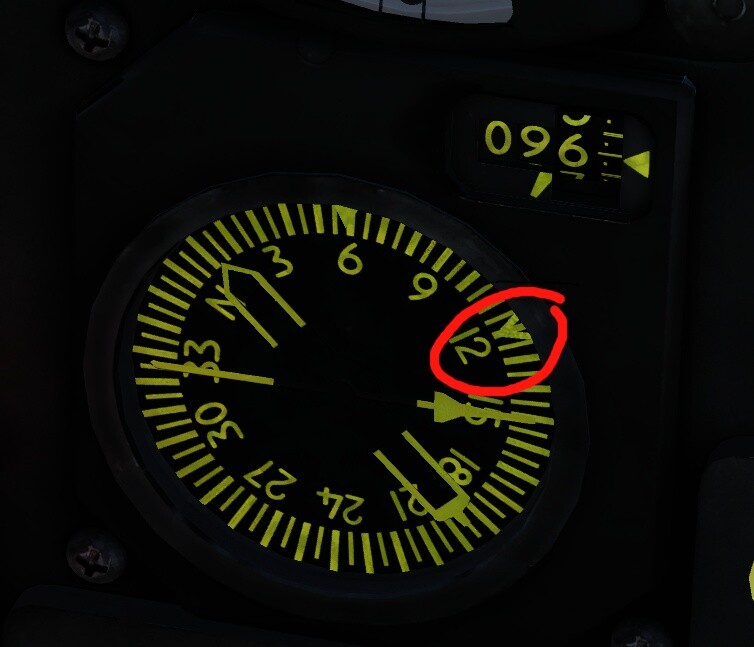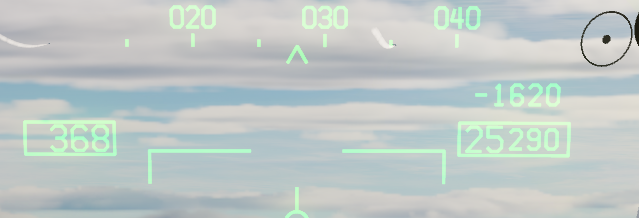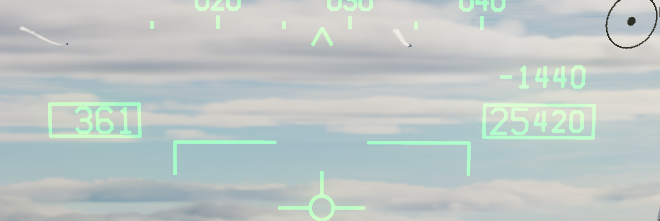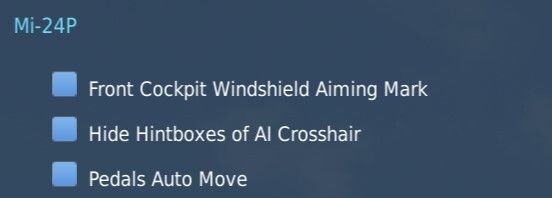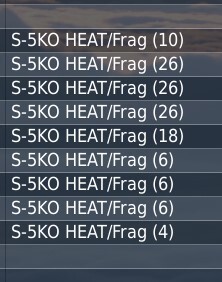-
Posts
3451 -
Joined
-
Last visited
-
Days Won
2
Content Type
Profiles
Forums
Events
Everything posted by some1
-
It's not stupid, the dots are not really solid rectangles 3x3, but rather a bunch of pixels of different shades, that can be made more or less transparent. So you can get relatively smooth transition between different sizes. I'm counting the pixels in the previous posts, because they're comparable here in this particular example, but it's really about apparent size of the object in angular terms. So far in VR it's still about two times off the intended target (if the intended target is how it currently looks on a monitor).
-
These are the full resolution, pixel-for-pixel as seen on a monitor. I just cropped to the part that is the subject of the discussion, no point in posting the whole 4k cockpit image, it will only make comparison harder. If you have trouble seeing them on a phone, you can always pinch to zoom. And one more for comparison. Same situation, same zoom level, 4k monitor, this time Improved spotting dots - OFF. Target at 30 km is a single pixel. So a guy on a monitor may see this, while a guy in VR using the same settings gets a blob that is ~16 times bigger and can't be turned off. We are paying customers, not beta testers. This is not DCS "Open Beta" any more, this is "Unified Release". If you want to gather feedback about a new feature that is clearly unfinished and you have obvious trouble tweaking it since 2023, make it opt-in or opt-out.
-
Still awful. ED stubbornness in forcing this broken implementation on everybody is mind boggling. But let's repeat one more time. The dots in VR are at least twice the size of the dots on a 4k monitor. Which makes them more than twice as noticeable, because their area is 3-4 times bigger. 4k monitor, HUD lines are 4 pixels wide, dot is 2 pixels. VR, HUD lines are 4 pixels wide, dot is 4 pixels. In both cases the target is 30 km away. Since projected HUD image has fixed angular dimensions, it's a good way to measure apparent size of the objects regardless of resolution and display mode.
-
Ok, sorry, I misinterpreted your post
-
I try hard enough not to facepalm reading such responses. Instead of waiting for the perfect, not blurry photo of an American F-16C block 50 with OFP M4.2+ made on a Sunday Afternoon in August 2007 at Shaw AFB, coming from an unclassified source, ED can simply check their references. So far there is no evidence that ED version of this gauge ever existed anywhere, and it's just a simple modeller's error. Both older and newer versions of F-16 use the airspeed gauge as shown on the photos here.
-
And another good photo of F-16 airspeed indicator posted on the forum in another thread today. While it is from a different version, they all look the same. I've never seen the indicator looking the way ED modelled it in DCS, in any F-16 manual or real life photo.
-
Thanks @SaxonRaider The problem with range figures is that they are not really comparable between airplanes, especially airplanes of different type or from different eras. There's many ways range can be measured and it's not always obvious which method, or flight profile, was used to generate the numbers posted in books or wikipedia. Ferry range differs depending on if and how many external tanks were used. Combat range differs depending on what combination of external tanks, weapons and flight profile was used. Combat range figures can also assume X minutes of actual combat in max power/afterburner, or not. Etc. Not to mention the numbers may also be hard to find in the first place, wikipedia does not have them all.
-
Thanks for the details. Yeah, it definitively doesn't show that right now.
-
You can see how a J79 engine looks up close here.
-
They're not mandatory, ED botched the settings. Dots can be turned off in 2D, stay always on in VR.
-
There is this caret on the HSI that is not mentioned in the manual. It only moves if there is a wind in the mission, otherwise it's pegged at 12 o'clock. It moves from side to side, but it doesn't seem to indicate ground track (drift) or wind direction, it's movement is rather erratic. What it's supposed to show?
-
This little triangle should show aircraft turn rate, but in DCS it reacts only to aircraft bank angle. Same issue with the equivalent indicator in Optical Display Assembly (NVG)
-
- 1
-

-
Sigh, one more time: In the Apache, Marianas charts show on 5, 10, 15, 25, 50, 75 and 100 scale setting. In the Hornet, Marianas charts show only on 5 and 10 scale setting In the Apache, Channel charts show in 5, 10, 15, 25 and 50 scale setting In the Hornet, Channel charts show only on 5 setting. Not "some settings". One setting. Aircraft from other developers do not have this issue. Only aircraft developed by ED have issues with showing charts on maps created by... ED. That's hardly working as indented.
-
The Hornet does not show the charts that are already available in the game. They show in the Apache, Kiowa, Harrier, F-15E and JF-17 at various scales on those maps, and in Mission Editor. Somehow it can work in those aircraft, but not in the Hornet.
-
Yep, they also look very bad on Quest Pro. The spotting dots CAN be turned off in 2D: Improved Spotting Dots off: Improved Spotting Dots on: But they CAN NOT be turned off in VR: Improved Spotting Dots off: Improved Spotting Dots on: No difference in VR.
-
The same problem is not only with AI co-pilot, but also with the main aircraft autopilot. If the yaw channel is on, it will trim the pedals by itself when the required deflection exceeds autopilot authority. The only way to recenter the pedals after that is to reset all trim (incl. cyclic). There should be a way to disable Pedals Auto Move, like it's an option for Mi-24.
-

Rocket burst length incorrect behaviour when using 4 rocket pods
some1 replied to NumberTwo's topic in Bugs and Problems
Rocket salvos are still messed up here. Tried the default payload with 4x UB32 pods, and instead of 4 salvos of 4x8 rockets (32), that's what I got: There's also at least one zero length salvo in there, meaning that no rockets leave the pod when you press the button, but they will launch with the next press. Different positions of salvo switch give different results, but none of them matches the numbers from the manual. mi24salvo.trk -
ED own Marianas and Channel maps also lack these graphics in the Hornet.
-
Nope, still not fixed, FFB does not initialize correctly in airstart missions.
-
I observe the same issue with vpforce rhino. The resistance to displacement is not smooth, it's more like buffet shake.
-
None, except trackballs are usually bigger and most models only come in wired version. One thing I would avoid are trackballs with touch sensitive area instead of physical scroll ring around the ball. I had one like that and it didn't work well. The ones you posted seem ok.
-
No, not to my knowledge. The stick is a relatively simple device with springs and eddy current dampers. The computer takes care of translating stick position to flight controls input, depending on the flight mode. So it can work as g-command, aoa-command, pitch rate, or something in between.






